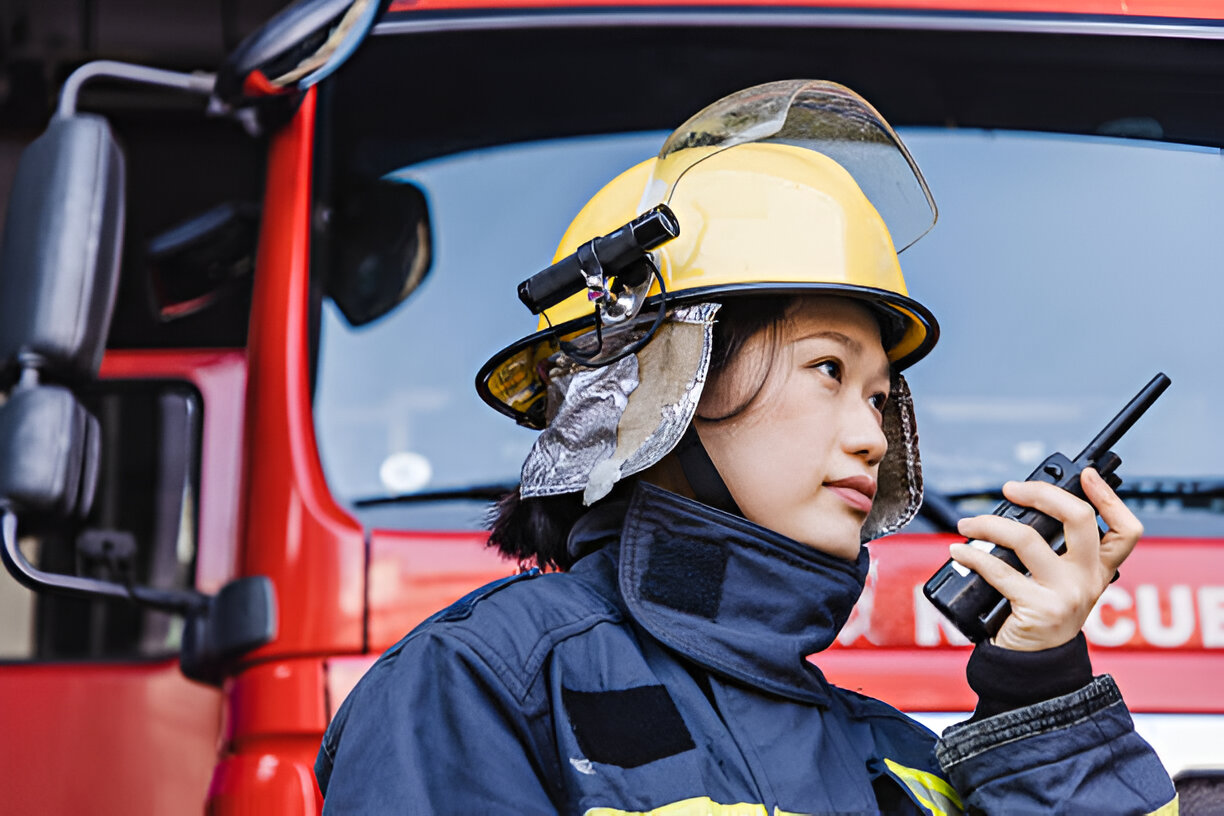Introduction
But have you ever wondered how do walkie talkies work?
If you’ve ever watched security guards coordinate at an event, or construction supervisors managing a busy site, you’ve likely heard the familiar “copy that” sound — that’s a walkie talkie in action.
Walkie talkies, also known as two-way radios, are among the most reliable communication tools in the world. Even in the age of smartphones, they remain indispensable for industries that need instant, uninterrupted, and secure communication — such as security, logistics, hospitality, and emergency services.
How can they transmit voices instantly without SIM cards, mobile networks, or internet connections?
Let’s break down the simple yet powerful science behind walkie talkies — and why businesses across Malaysia continue to depend on them daily.
What Exactly Is a Walkie Talkie?
A walkie talkie is a portable, handheld radio device that allows people to both transmit and receive voice signals using radio waves.
Unlike mobile phones that connect through cellular networks, walkie talkies use direct radio communication, meaning one device sends a signal directly to another (or multiple others) tuned to the same frequency.
Each walkie talkie contains:
- A microphone (to capture your voice)
- A speaker (to hear the incoming message)
- A transmitter and receiver (to send and receive signals)
- A tuned antenna (to carry those radio waves)
- A PTT button (Push-To-Talk) to control when you’re speaking
When you push the button, you talk. When you release it, you listen — simple, efficient, and immediate.
How Do Walkie Talkies Work — Step by Step

- Push and Talk When you press the PTT button and speak, your voice is converted into an electrical signal through the microphone.
- Conversion into Radio Waves
This electrical signal is then encoded and transmitted as radio waves using a set frequency — often within VHF (Very High Frequency) or UHF (Ultra High Frequency) bands. - Transmission Across the Air
The radio wave travels through the air and reaches other walkie talkies tuned to the same channel. - Reception and Decoding
The receiver in the other device decodes the signal, converts it back into sound, and plays it through the speaker — all within milliseconds.
This is why walkie talkies feel instantaneous — there’s no waiting for signal bars, no call setup, and no internet delay.
Understanding Frequencies: VHF vs. UHF
Walkie talkies operate on two main frequency bands:
| Band | Full Form | Best For | Characteristics |
| VHF (30–300 MHz) | Very High Frequency | Outdoor / open areas | Longer range, but weaker through walls |
| UHF (300–3000 MHz) | Ultra High Frequency | Indoor / urban environments | Stronger through obstacles, shorter range outdoors |
Choosing the right frequency depends on where your team works most often. For example:
- Event security in buildings → UHF
- Outdoor patrolling or construction → VHF
At Sole Engineering, we help clients select the ideal radio type and frequency license (MCMC-approved) for their specific environment.
Why Walkie Talkies Still Matter in 2025
Despite mobile technology being everywhere, businesses still rely heavily on two-way radios because they offer:
- Instant Push-to-Talk Communication
No dialing, no waiting — just one press and you’re connected to your entire team. - Dependable Signal in Remote Areas
Perfect for regions without cell coverage, such as rural sites, warehouses, or basements. - Durability and Long Battery Life
Walkie talkies are designed for rugged use — dustproof, waterproof, and operational for 12–18 hours straight. - Secure, Encrypted Channels
Private channels reduce the risk of unauthorized listening — crucial for security and law enforcement. - Group Communication Made Easy
Talk to multiple people at once, ideal for coordination across teams or departments.
Common Use Cases in Malaysia
At Sole Engineering, we’ve seen walkie talkies improve efficiency in:
- Security & Guarding Operations – For instant coordination during patrols or emergencies.
- Construction Projects – Enabling supervisors, crane operators, and workers to communicate safely.
- Event Management – Keeping staff connected across large venues or outdoor areas.
- Logistics & Warehousing – Streamlining communication between drivers, loaders, and control rooms.
- Hospitality & Retail – Ensuring quick staff communication without using phones.
Each industry benefits from customized solutions — including power range, battery capacity, and accessories like earpieces or repeaters for extended coverage.
FAQs
Q1: Do walkie talkies need a license in Malaysia?
Yes. Commercial and professional radios that use UHF/VHF bands require MCMC licensing. Soleeg Engineering can assist with the application and compliance process.
Q2: How far can they communicate?
Range varies by terrain and model — typically 2–5 km for standard units, up to 30 km with repeaters or open terrain.
Q3: Can walkie talkies work through buildings?
Yes, especially UHF models which penetrate walls and metal structures better than VHF.
Q4: What’s the battery life like?
Modern two-way radios offer up to 18 hours of operation on a single charge — ideal for long shifts.
Q5: Can they connect with smartphones?
Some advanced models support Bluetooth or app integration for hybrid communication setups.
Conclusion
Walkie talkies continue to be the most reliable, cost-effective, and secure communication tools for businesses that can’t afford downtime or delays.
At Sole Engineering, we specialize in two-way radios, antennas, and communication systems tailored to Malaysian industries — ensuring crystal-clear communication whether you’re working in the city or in the field.
Contact us today to learn more about professional walkie talkie systems for your organization.







